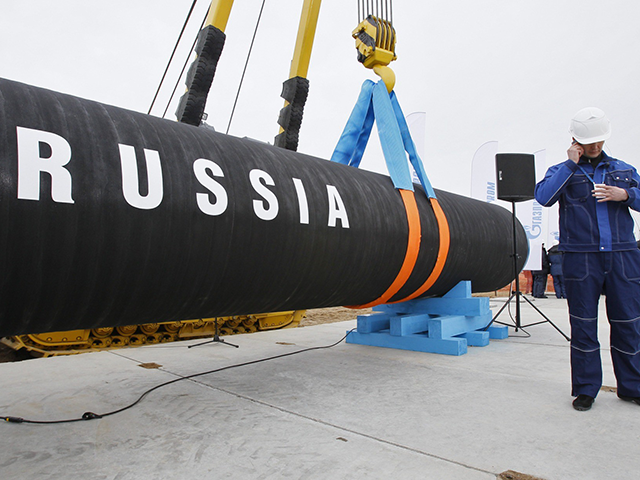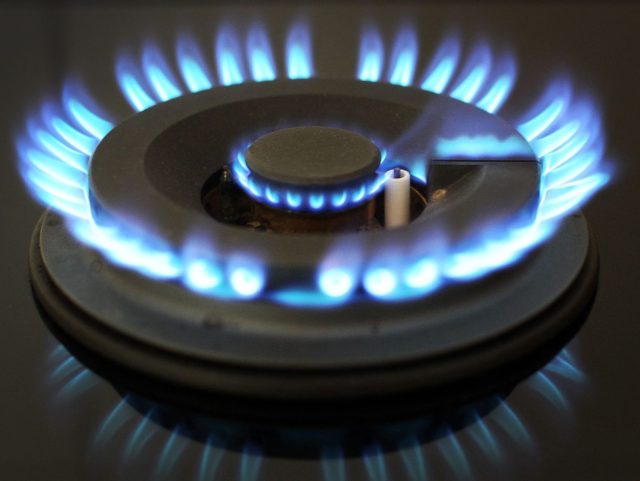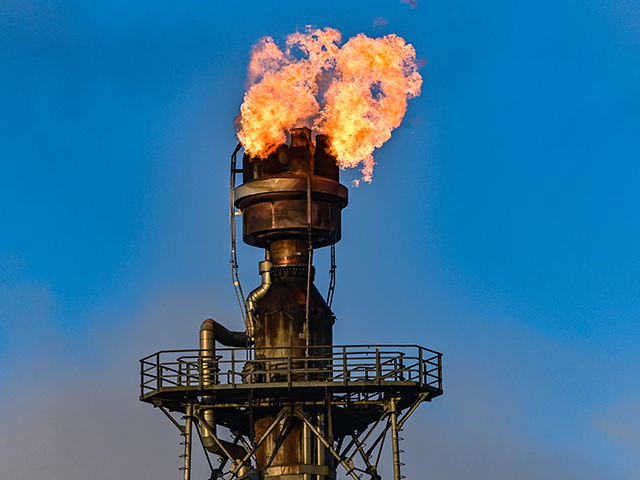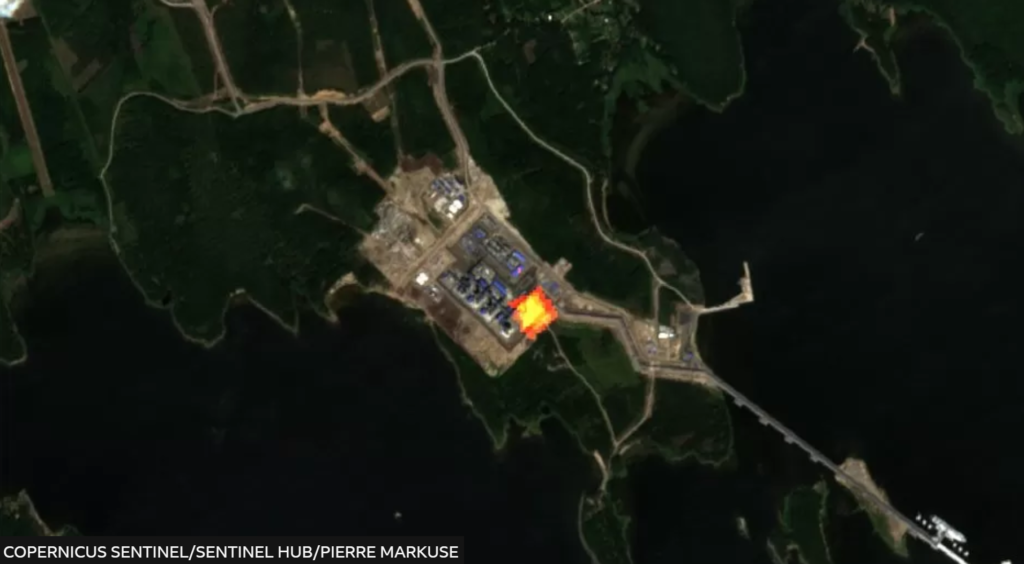Residents of Finland began reporting a huge jet of flame from across the Russian border last month. Satellite images detected a massive heat bloom that turned out to be a Russian liquefied natural gas (LNG) plant burning off millions of cubic meters of gas that were supposed to be sold to European customers.
Senior VP Sindre Knutsson of Norway-based research firm Rystad Energy told Sky News on Friday the Russians are burning 4.34 million cubic meters of gas worth about $10 million every day, destroying enough fuel to supply 1.5 million European homes.
The burning is taking place at an LNG plant in the Russian town of Portovaya, located northwest of St. Petersburg near the Finnish border. The plant is located near a compressor station for the Nord Stream 1 undersea pipeline that leads to Germany.
Russia cut the flow of gas through Nord Stream 1 down to 20 percent of its nominal capacity in late July, completing a series of escalating restrictions that were supposedly necessitated by “technical problems” with a compressor turbine.
Russia is burning off large amounts of natural gas that it previously would have exported to Germany through the Nord Stream 1 pipeline, analysis suggests https://t.co/nGfnbjE7KY
— Sky News (@SkyNews) August 26, 2022
The Germans accused Russia of cutting off their gas to retaliate for opposition to the Russian invasion of Ukraine. Russia supplies about a third of Germany’s gas needs.

A Russian construction worker speaks on a mobile phone during a ceremony marking the start of Nord Stream pipeline construction in Portovaya Bay some 170 kms (106 miles) north-west from St. Petersburg, Russia. (AP Photo/Dmitry Lovetsky)
“Gas is now a part of Russian foreign policy and possibly Russian war strategy,” German official Klaus Mueller charged, as LNG prices across Europe skyrocketed.
Knutsson said the volume of gas discharged from the Portovaya station was so large that it seemed unlikely to be a result of testing or construction. The plant is new and scheduled to officially begin operating later this year.

A burning hob of a gas cooker is pictured in Gaiberg near Heidelberg, southwestern Germany, on June 24, 2022. (DANIEL ROLAND/AFP via Getty Images)
“The exact reason for the flaring happening is uncertain because there has not been any proper communication from Gazprom or Russia,” he noted.
Knutsson added that the “flaring” of flaming gas from the Portovaya facility is blowing about 9,000 metric tons of carbon dioxide into the air every day, a situation he described as an “environmental disaster.”
Other analysts warned flaring on such a massive scale produces a great quantity of soot or “black carbon,” which flows northward and settles on Arctic snow, causing it to melt.
“I’ve never seen an LNG plant flare so much. Starting around June, we saw this huge peak, and it just didn’t go away. It’s stayed very anomalously high,” Dr. Jessica McCarty, a satellite data expert from Miami University in Ohio, told the BBC on Friday.
Germany’s ambassador to the United Kingdom, Miguel Berger, said Russia was probably destroying excess inventory because “they don’t have other places where they can sell their gas.”
Industry experts noted that keeping an LNG facility running and burning off product that is not shipped elsewhere is considered cheaper and safer than shutting the facility down cold and restarting it later.
Knutsson speculated the Russians might want that massive pyre of wasted natural gas to be clearly visible from Finland, as a sign of Russian dominance over European energy markets.
“There could not be a clearer signal — Russia can bring energy prices down tomorrow. This is gas that would otherwise have been exported via Nord Stream 1 or alternatives,” he said.
Russian state energy company Gazprom refused to confirm or discuss the gas burning with foreign media.


COMMENTS
Please let us know if you're having issues with commenting.